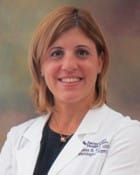Carol Gaines still remembers how a simple act triggered excruciating facial nerve pain. “I was brushing my teeth when suddenly it felt like a firecracker went off in my mouth,” she recalled. “The pain only lasted for a few seconds, but it was the most intense pain I had ever experienced in my life.”
For several months, there was no pain, then it came like a rollercoaster, often preventing her from eating and talking. She knew it was time to find answers by seeing her primary care doctor. The diagnosis, trigeminal neuralgia, is a painful condition. A blood vessel at the stem of the brain irritates and compresses the trigeminal nerve. This nerve is one of three that transmit sensations to the forehead, cheek, and lower jaw.
According to the National Institute of Neurological Disorders and Stroke factsheet about trigeminal neuralgia, this disorder is a more common nerve pain problem among adults age 50 and older.
Carol reached a point at age 62 where she no longer got relief from pain medications. Her research on the subject brought her to the Sacred Heart Institute for Neurology and Neurosurgery in Pensacola, Fl.

A cerebrovascular and endovascular neurosurgeon at Sacred Heart Hospital has expertise and experience performing in microvascular decompression and other brain procedures such as Gamma Knife radiosurgery to treat facial nerve disorders. Dr. Toledo has done more than 150 decompression procedures to treat debilitating nerve pain.
“Trigeminal neuralgia (facial nerve pain) is often described as the worst pain known to mankind,” said Dr. Toledo. “A blood vessel touching the trigeminal nerve can wear down the protective myelin coating around the nerve, causing it to misfire. It’s like an electrical cable losing its plastic covering and exposing the wires.”
To confirm the diagnosis, Carol had a brain MRI. Her case was textbook, and microvascular decompression was recommended to treat the trigeminal neuralgia. During the two-hour procedure, Dr. Toledo made an incision behind the ear and removed a small part of Carol’s skull to access the trigeminal nerve at the base of her brain. Then she decompresses the nerve by placing a non-absorbable, sponge-like material to create a buffer between the nerve and blood vessel.
“Most patients who undergo microvascular decompression wake up from anesthesia and are immediately cured of their pain,” Toledo said.
Gamma Knife Radiosurgery Offers Other Options
Dr. Toledo also treats trigeminal neuralgia using Gamma Knife stereotactic radiosurgery. During this less invasive procedure, she focuses the radiation beams to precisely target the nerve root and disrupts the pain signals. Every patient is different, that is why at Sacred Heart’s Neuroscience Center, a thorough evaluation is done to create a personalized treatment plan.Life After the Decompression Procedure
“Living with trigeminal neuralgia was a humbling experience,” remembers Carol. “I became adept at working my way through the pain each day, but I knew I couldn’t continue to live that way. I’m glad I had the surgery because my quality of life has greatly improved.” Now Carol is getting back to doing the activities that she enjoys, including singing in her church choir.
For more information about the brain spine services at Sacred Heart Pensacola, including specialized procedures like microvascular decompression, call 850-416-2250.
Dr. Maria Toledo has special medical interests in treating lesions in the brain and spine, as well as blockages in the carotid arteries. She has significant experience in treating pituitary tumors, hemifacial spasm, trigeminal neuralgia, meningiomas and other brain tumors.

